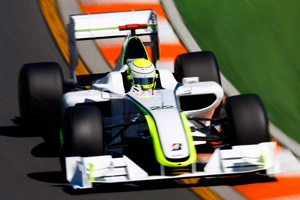ISLAMATRON wrote:Most of the ballast is at the CoG,they use very little ballast for weight balance, that is designed in by wheelbase & component placement.
Traditionally, that is the case.
However, this year, the wheel sizes have been --- up.
A brief explanation:
The front tyres have been smaller in width than the rears for ages. In 2008, front wheel width was 305-355 and rear 365-380mm... this remained the case in 2009.
However, the front tyres have had to have 4 (of the same width) grooves in them since 1999 (?).
Now, as you can quickly figure out, that means removing the grooves results in a greater proportional change to the front tyres than the rear.
Hence why the rears are gonna be melting like soft butter this season.
So the teams are desperate to move weight forward onto the front wheels this season. This will be rectified with larger rear tyres for 2010.


